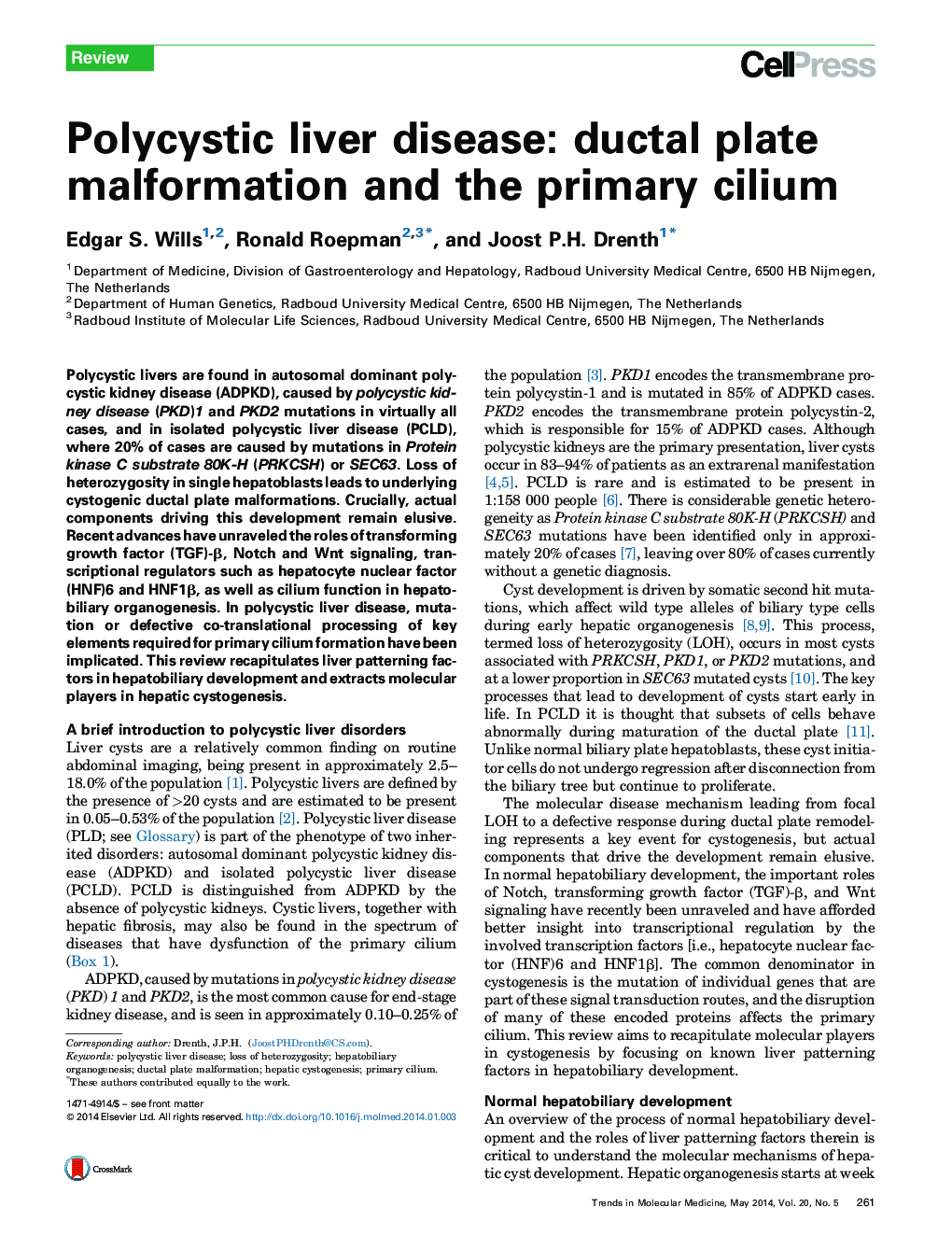| کد مقاله | کد نشریه | سال انتشار | مقاله انگلیسی | نسخه تمام متن |
|---|---|---|---|---|
| 2838560 | 1165027 | 2014 | 10 صفحه PDF | دانلود رایگان |
• Recapitulation of the core process of cystogenesis: ductal plate malformation.
• Reiteration of the roles PRKCSH and SEC63 play in co-translational processing of polycystins.
• Discussion of signaling pathways Notch, TGF-β, and Wnt in hepatobiliary development.
• Current overview of the crucial role of the primary cilium in hepatic cystogenesis.
Polycystic livers are found in autosomal dominant polycystic kidney disease (ADPKD), caused by polycystic kidney disease (PKD)1 and PKD2 mutations in virtually all cases, and in isolated polycystic liver disease (PCLD), where 20% of cases are caused by mutations in Protein kinase C substrate 80K-H (PRKCSH) or SEC63. Loss of heterozygosity in single hepatoblasts leads to underlying cystogenic ductal plate malformations. Crucially, actual components driving this development remain elusive. Recent advances have unraveled the roles of transforming growth factor (TGF)-β, Notch and Wnt signaling, transcriptional regulators such as hepatocyte nuclear factor (HNF)6 and HNF1β, as well as cilium function in hepatobiliary organogenesis. In polycystic liver disease, mutation or defective co-translational processing of key elements required for primary cilium formation have been implicated. This review recapitulates liver patterning factors in hepatobiliary development and extracts molecular players in hepatic cystogenesis.
Journal: - Volume 20, Issue 5, May 2014, Pages 261–270
